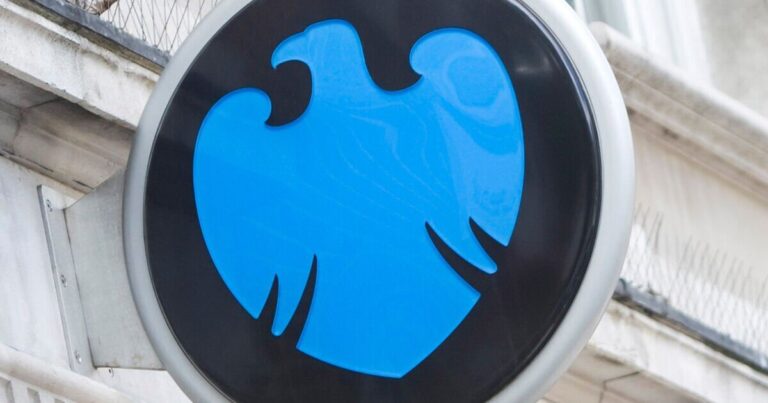“The risk of under-investing is dramatically greater than the risk of over-investing,” said Sundar Pichai, the boss of Alphabet, on an earnings call last week. He, like lots of executives nowadays, was talking about artificial intelligence (AI). More specifically, he was talking about building more AI data centres to serve the customers of the tech giant’s cloud-computing arm. The sums involved are eye-popping. Alphabet’s capital spending is expected to grow by about half this year, to $48bn. Much of that will be spent on AI-related gear.
Mr Pichai is not alone. New Street Research, a firm of analysts, estimates that Alphabet, Amazon, Meta and Microsoft will together splurge $104bn on building AI data centres this year. Add in spending by smaller tech firms and other industries and the total AI data-centre binge between 2023 and 2027 could reach $1.4trn.
The scale of this investment, and uncertainty over if and when it will pay off, is giving shareholders the jitters. The day after Alphabet’s results the Nasdaq, a tech-heavy index, fell by 4%, the biggest one-day drop since October 2022. This week analysts will pore over the quarterly results of Amazon and Microsoft, the world’s two biggest cloud companies, for clues as to how their AI businesses are faring.
For now, the tech giants show little inclination to pare back their investments, as Mr Pichai’s remarks show. That is good news for the myriad suppliers that are benefiting from the boom. Nvidia, a maker of AI chips that in June briefly became the world’s most valuable company, has grabbed most of the headlines. But the AI supply chain is far more sprawling. It spans hundreds of firms, from Taiwanese server manufacturers and Swiss engineering outfits to American power utilities. Many have seen a surge in demand since the launch of ChatGPT in 2022, and are themselves investing accordingly. In time, supply bottlenecks or waning demand could leave them over-extended.

ai investment can broadly be split into two. Half of it goes to chipmakers, with Nvidia the main beneficiary. The rest is spent on makers of equipment that keeps the chips whirring, ranging from networking gear to cooling systems. To assess the goings-on along the ai supply chain, The Economist has examined a basket of 60-odd such companies. Since the start of 2023 the mean share price of firms in our universe has risen by 106%, compared with a 42% increase in the s&p 500 index of American stocks (see chart). Over that time their expected sales for 2025 climbed by 14%, on average. That compares with a 1% increase across non-financial firms, excluding tech companies, in the S&P 500.
The biggest gainers were chipmakers and server manufacturers (see chart). Nvidia accounted for almost a third of the rise in the group’s expected sales. It is forecast to sell $105bn of AI chips and related equipment this year, up from $48bn in its latest fiscal year. AMD, its nearest rival, will probably sell about $12bn of data-centre chips this year, up from $7bn. In June Broadcom, another chipmaker, said that its quarterly AI revenues jumped by 280%, year on year, to $3.1bn. It helps customers, including cloud providers, design their own chips, and also sells networking equipment. Two weeks later Micron, a maker of memory chips, said its data-centre revenues had also jumped, thanks to soaring AI demand.

Companies that make servers are also raking it in. Both Dell and Hewlett Packard Enterprise (hpe) said in their most recent earnings calls that sales of AI servers doubled in the past quarter. Foxconn, a Taiwanese manufacturer that assembles lots of Apple’s iPhones, also has a server business. In May it said its AI sales had tripled over the past year.
Other firms are seeing interest spike, even if new sales have not yet materialised. Eaton, an American maker of industrial machinery, said that in the past year it saw more than a four-fold increase in customer enquiries related to its AI data-centre products. AI servers can require up to ten times more power than conventional ones. Earl Austin junior, the boss of Quanta Services, a firm that builds renewable-power and transmission equipment, recently admitted that the surge in demand for its data-centre business had “caught me off guard a little bit”. Vertiv, which sells cooling systems used in data centres, noted in April that its pipeline of AI projects more than doubled within two months.
All this interest is setting off a further frenzy of investment. This year around two-thirds of firms in our sample are expected to raise their capital expenditure, relative to sales, above their five-year averages. Many companies are building new factories. They include Wiwynn, a Taiwanese server-maker, Supermicro, an American one, and Lumentum, an American seller of advanced networking cables. Many are also spending more on research and development.
Some companies are investing through acquisitions. This month AMD said it was buying Silo AI, a startup, to boost its AI capabilities. In January HPE announced that it would spend $14bn to buy Juniper Networks, a networking firm. In December Vertiv announced its purchase of CoolTera, a liquid-cooling specialist. The firm hopes this will help it scale up its production of liquid-cooling technology 40-fold.
Just as the spending ramps up, though, the threats to the ai supply chain are building. One problem is its heavy reliance on Nvidia. Baron Fung, of Dell’Oro Group, a research firm, notes that when Nvidia went from launching a new chip every two years to every year, the entire supply chain had to scramble to build new production lines and meet accelerated timelines. Future sales for lots of firms in the AI supply chain are predicated on keeping the world’s most valuable chipmaker happy.
Another threat stems from supply bottlenecks, most notably in the availability of power. An analysis by Bernstein, a broker, looks at a scenario in which by 2030 AI tools are used roughly as much as Google search is today. That would raise the growth in power demand in America to 7% a year, from 0.2% between 2010 and 2022. It would be hard to build that much power capacity swiftly. Stephen Byrd of Morgan Stanley, a bank, notes that in California, where many AI data centres could be built, it takes six to ten years to get connected to the grid.
Some companies are already trying to fill the gaps by providing off-grid power. In March Talen Energy, a power company, sold Amazon a data centre connected to a nuclear-power plant for $650m. CoreWeave, a small AI cloud provider, recently struck a deal with Bloom Energy, a fuel-cell maker, to produce on-site power. Others are repurposing sites such as bitcoin-mining locations that already have grid access and power infrastructure. Still, the energy needs for ai are so vast that the risk of a power shortage limiting activity remains.
The biggest threat to the AI supply chain would come from waning demand. In June Goldman Sachs, a bank, and Sequoia, a venture-capital firm, published reports questioning the benefits of current generative-AI tools, and—by extension—the wisdom of the cloud-computing giants’ spending bonanza. If ai profits remain elusive, the tech giants could cut capital spending, leaving the supply chain exposed.
The build-out of factories has brought higher fixed costs. Across our sample of firms the median spending on property, plants and equipment is expected to jump by 14% between 2023 and 2025. Some investments may start to look suspect if demand is slow to materialise. The price tag on HPE’s purchase of Juniper Networks was two-thirds of the acquirer’s market value when it was announced in January.
Even after the wobbles of last week, market expectations remain bullish. For our sample of firms the median price-to-earnings ratio, a measure of how investors value profits, has climbed by nine percentage points since the start of 2023. If such expectations are to be met, AI tools need to improve quickly, and businesses need to adopt them en masse. For the many companies along the ai supply chain, the stakes are getting uncomfortably high. ■

















